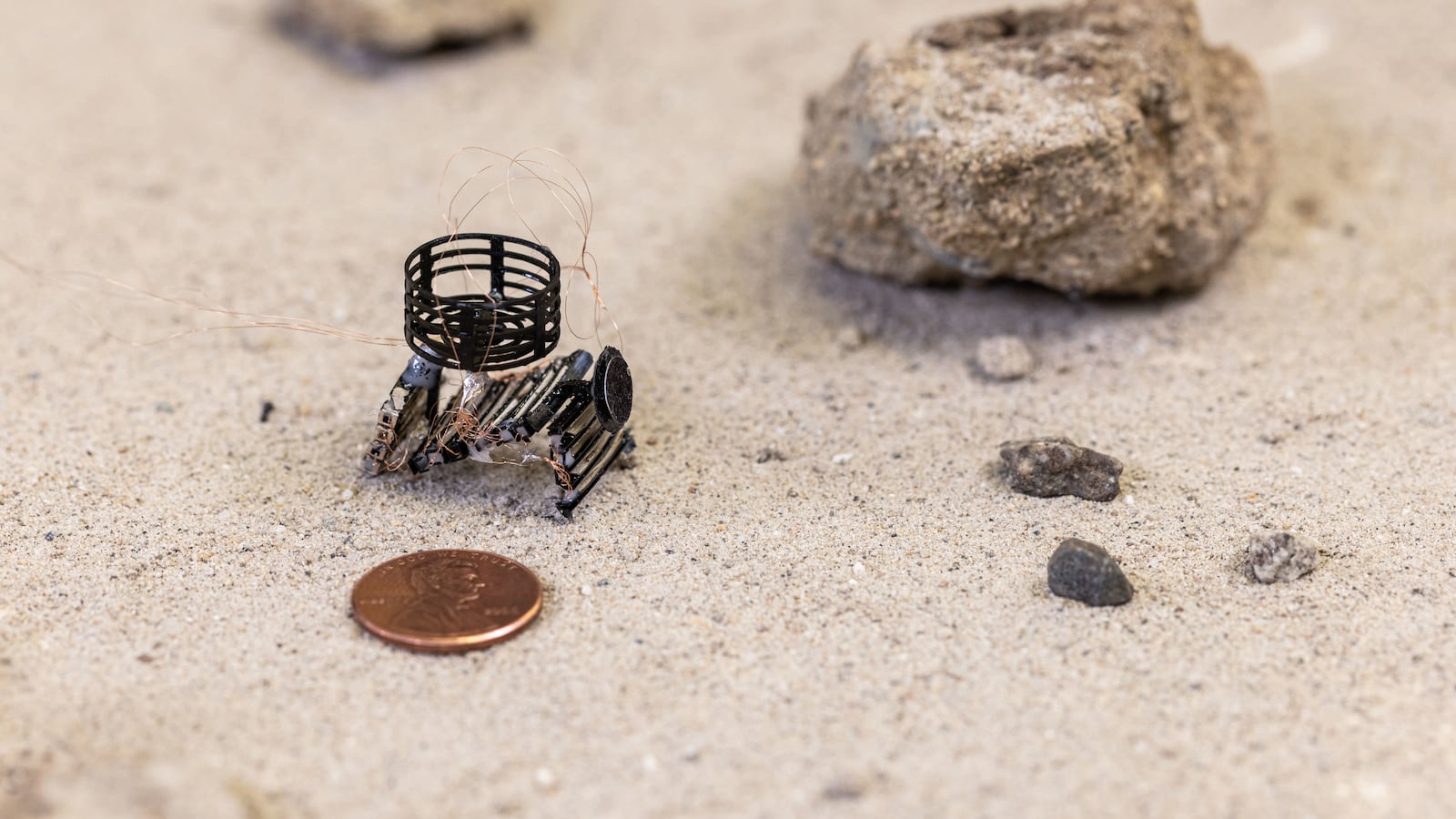A swarm of tiny robots might just save your life one day—or at least that’s the idea with a new type of tiny robot that can be 3D printed all at once.
In a new study published in Science today, a team of researchers at the University of California, Los Angeles developed a new 3D printing method that can create working robots made from metamaterials (synthetic materials from elements not found in nature). The resulting machines, which the scientists have dubbed ‘meta-bots,’ are capable of moving, sensing, and navigating terrain all on their own.
The meta-bots are each roughly the size of a fingernail. The team believes that it has the potential for a number of different applications including exploring hazardous environments like collapsed buildings or other areas with rubble to aid in rescue efforts. They could even be built in smaller sizes to assist in medical procedures by delivering drug doses to specific sites in the body.
“We envision that this design and printing methodology of smart robotic materials will help realize a class of autonomous materials that could replace the current complex assembly process for making a robot,” Xiaoyu (Rayne) Zheng, a UCLA engineer and the study’s lead author, said in a press release.
The 3D printing technique specifically relies on the use of piezoelectric metamaterials. This substance uses a lattice-shaped design that can bend and move in response to electricity. With the help of a small battery and a control sensor attached to it, the robot can scoot around on its own. The meta-bot also can emit ultrasound, which allows it to respond to its environment accordingly.
“With complex motions, multiple modes of sensing and programmable decision-making abilities all tightly integrated, it’s similar to a biological system with the nerves, bones and tendons working in tandem to execute controlled motions,” Zheng said.
To demonstrate their new 3D printing tech, the team created three meta-bots that can perform different tasks. One bot could move around corners and randomly-placed obstacles. Another, could jump and walk on rough terrain. The last could scurry away and escape any dangerous contact like a sharp impact.
The new technique offers a novel and potentially groundbreaking way to develop small robots with a variety of different use cases. So, if you ever find yourself in a disaster emergency in the future and a bunch of tiny robots start swarming you, don’t panic too much. They might just be there to help.






